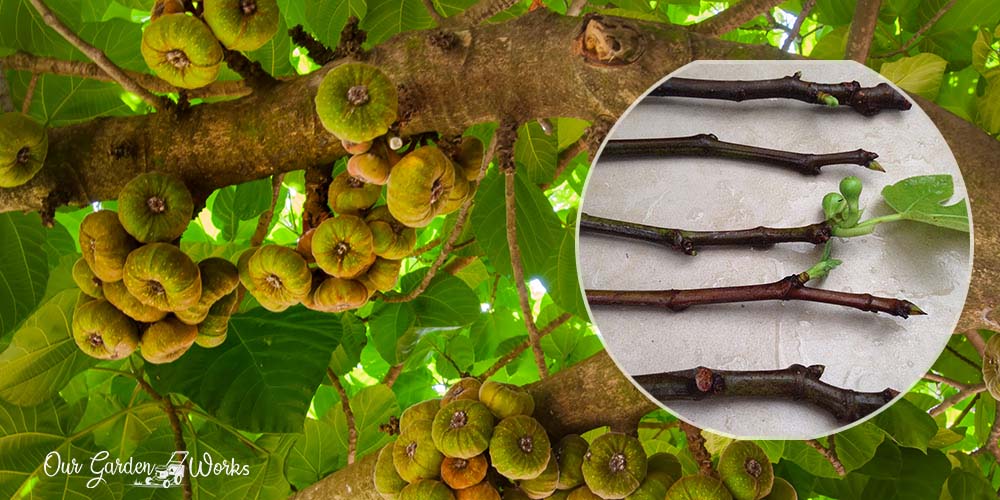You’ll never buy another fig tree again if you know how to grow figs from cuttings. It’s no secret that gardeners can share and grow more plants by starting on one healthy fig tree and using its healthy branches to multiply new plants.
Imagine the amount you’ll save from learning some propagation techniques!
Figs are among the easiest plants to grow. They don’t need grafting and the cuttings can grow roots as long as there’s high humidity.
Most gardeners grow figs from cuttings in winter when the tree is pruned and the plant is in dormancy.
The woody stems may look dead but are just dormant and storing enough energy for the next growing season.
Fig propagation comes in different methods and gardeners in every region have their strategies on how to grow figs from cuttings.
Check them out below.
How To Grow Figs From Cutting – [Step-By-Step]
Fig trees overwinter. They can thrive in indoor and outdoor environments and hot and cold climates.
Gardeners have the flexibility to either grow the cuttings outdoors or indoors, depending on your preference.
However, there are some differences in how you will prepare and plant the cuttings. So, we divided the process into two methods:
Method 1: Growing Fig Cutting Outdoors
If you have an outdoor greenhouse setup for your crops, it can provide the ideal environment for growing fig cuttings.
The greenhouse cover helps filter the harsh sunlight and provides the humidity that cuttings need to develop a new set of leaves.
Here are the steps on how you can select the cuttings and plant them in a greenhouse:
Step 1: Select the cuttings
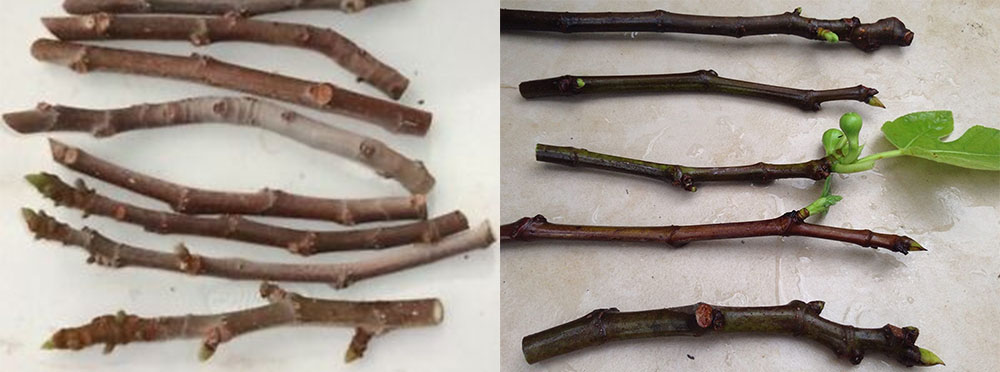
The best time to collect fig cuttings is during the last phase of their dormancy, wherein all of their energy is stored in their stems.
Choose fig trees that are 2 to 3 years old to ensure that the cutting has the ideal thickness or diameter.
Step 2: Measure and cut the cuttings
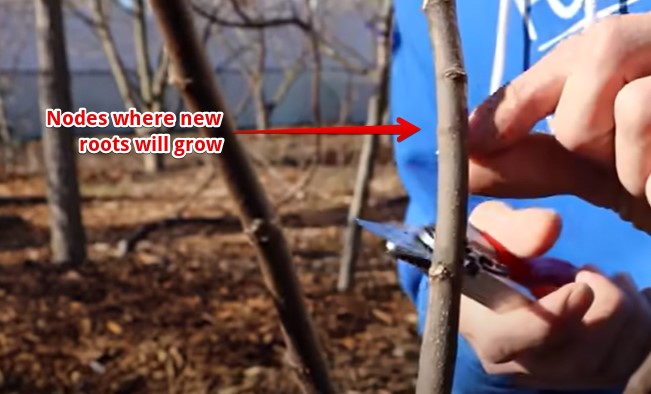
Fig cuttings are ideally 8 to 12 inches in length and are thick enough to grow new roots. The diameter of the stem should be around 0.5 to 0.75 inches.
Cut the bottom end of the cuttings at a 45-degree angle to ensure that more of its internal parts touch the soil while keeping the top end flat.
Some gardeners retain one or two leaves on the cuttings to help with their photosynthetic processes. However, cuttings without leaves can still grow at the same rate.
Step 3: Treat the cuttings
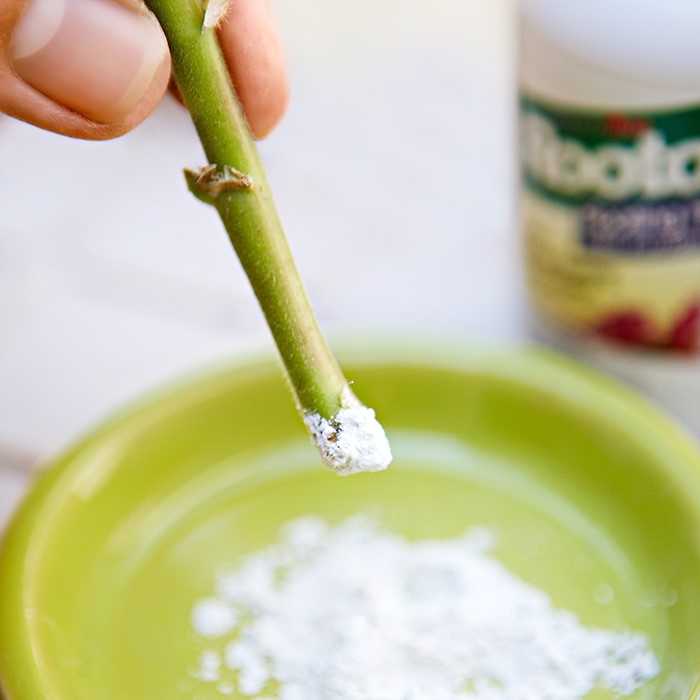
Treat the bottom end of the fig cutting with a sealant to prevent disease and prevent sap loss. Then, dip the bottom slanted end in the rooting hormone to help boost root growth.
Some gardeners don’t use rooting hormone but using it hosts a lot of benefits, such as:
- Provide uniformly-sized roots.
- Increase root number.
- Speedup rooting time.
Set the treated cuttings aside as you prepare the soil and gather new cuttings.
Step 4: Cut extra branches for better chances of growing new figs
Like growing seedlings, not all the cuttings that you will plant will be successful. So, it’s best to gather more than one for more chances of success.
Ideally, it’s best to prepare 6 to 8 cuttings. In case all the cuttings grow, you can give them as gifts to friends or sell them.
Step 5: Prepare the soil
Fig trees are not very particular with their soil. They only need soil that retains water but also drains well. You can use any medium but fig trees work best on the following soil mixes:
- 50% sand and 50% peat moss.
- 50% peat moss 50% perlite.
Place the soil mix in small containers or cups and poke a 3 to 4-inch hole for the cuttings. In some cases, gardeners don’t even use soil to root their fig cuttings. (Explained later in this post)
Step 6: Plant the fig cuttings
Plant the cuttings and let one of the nodes go below the soil surface. The nodes and bottom end are the locations where the roots will emerge.
If you plant the cuttings in-ground, plant them one foot apart. Water the newly planted cuttings to keep the soil damp.
Step 7: Build a mini greenhouse
Fig needs a lot of humidity to trigger root and foliage growth. To maintain the humidity level around the cuttings, you need to cover the cuttings with huge plastic containers, plastic bags, or place them inside your outdoor greenhouse.
Let the cuttings grow in the greenhouse for several months until they reach 2 to 3 feet. Once they reach that height, you can transplant them into bigger plants or in-ground.
Growing fig cuttings outdoors will take about 8 months to a year before you can transplant them into a bigger pot.
Method 2: Growing Fig Cuttings Indoors
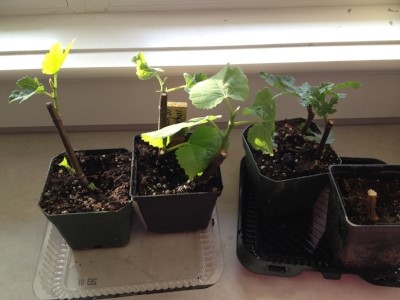
If you want to start growing figs early and spring remains unsettled in your region, you can jumpstart your fig cuttings indoors. Here’s how:
Step 1: Select the cuttings
Just like in the first method, select the parts of the mother fig tree that are suitable for cuttings. Choose a plant that’s 2 to 3 years old to ensure the ideal diameter or stem thickness of the cuttings.
If you get weak cuttings, their chances of growing roots and new leaves will be less than the ones from established and healthy fig trees.
Step 2: Measure and cut the cuttings
There’s no difference in cutting the stem of the fig tree for indoor growing. You can cut it between 8 to 12 inches with a diameter of 0.5 to 0.75 inches.
Cut the bottom end of the cuttings and make a slant and cut the top part flat. Cut more than one cutting to have spare in case one fails to grow.
Step 3: Treat the cuttings
Keep the cuttings safe from pathogens by sealing the flat end with a cutting sealant. Then, pour in or sprinkle the rooting hormone on the slanted end. Then, set aside the treated cuttings and prepare the soil.
Step 4: Prepare the potting soil and plant the cuttings
Use a 6-inch pot or a small cup and place a thin sheet of paper at the bottom. Initially add 2 to 3 inches of soil, then place the cutting in the middle. Pour in more potting soil or sand until the cup is ¾ full. Water the cups until the soil is damp.
For the finishing step, cut a 2-liter or 1-liter soda bottle at the bottom and use the top part to cover the cuttings to create a makeshift greenhouse.
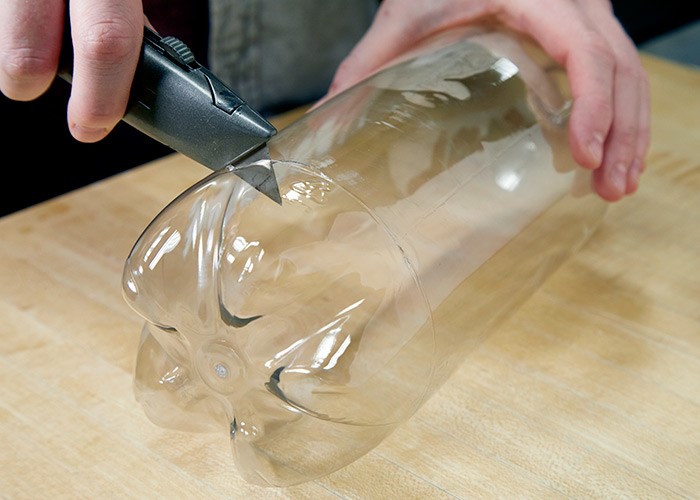
The bottle will help trap humidity in the air and speed up the rooting and growth of the cuttings.
Step 5: Place the cuttings in a good location
Place the cuttings in a location where they can receive indirect sunlight and away from cold drafts. Potted cuttings are more prone to root rot so water them sparingly. Wait for the soil to dry out first before watering again.
As soon as new leaves emerge from the cuttings, wait for another week before you remove the bottles. When the leaves emerge, they will be the ones responsible for capturing humidity in the air.
Step 6: Transfer the sprouted cuttings to bigger pots
When you notice the increase in stem diameter and more foliage, your fig cuttings are now ready for transplanting. Transfer them to the ground or in a bigger pot where their roots can spread freely and grow more.
To prevent transplant shock, slowly expose the cuttings outside before transplanting them.
Give the cuttings a week of gradual exposure to direct sun to train their defenses and survive the harsh summer weather outdoors.
Pro Tip: Fig cuttings can be deceiving while they are growing. They may grow a leaf or two but that doesn’t mean they have already developed some roots. At the same time, a cutting without a leaf or new sprouts doesn’t mean it has no roots.
To check the progress of your fig cuttings, try to nudge or pull them slightly. If there’s resistance from the soil, then it’s more likely that roots have started to grow.
Other Fig Propagation Techniques
Aside from the traditional or usual way of growing cuttings, some gardeners use different techniques to grow new roots. These include:
Ground Layering Method
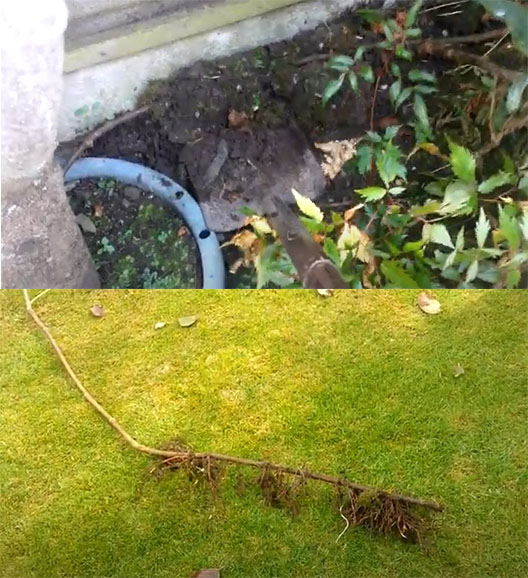
Ground layering is a method of rooting figs by burying a part of the branch, which is 8 to 12 inches, in the soil.
It allows the stem to grow new roots after several weeks without cutting off any part of the plant until the roots are already established.
It may look awkward to see the branch covered in soil but it can give you several cuttings with roots during the process.
Tissue Technique
Take it a simple science project but the simplest way to grow fig cuttings is through the conventional tissue wrapping method.
Wrap the fig cutting in damp tissue paper, then place it in a ziplock bag. Place the cutting in a warm area or next to a window with temperatures ranging from 50 F to 70 F to speed up the rooting process.
After 3 to 5 weeks, you’ll notice the roots growing from the wrapped part of the cuttings.
Rooting Figs in Water
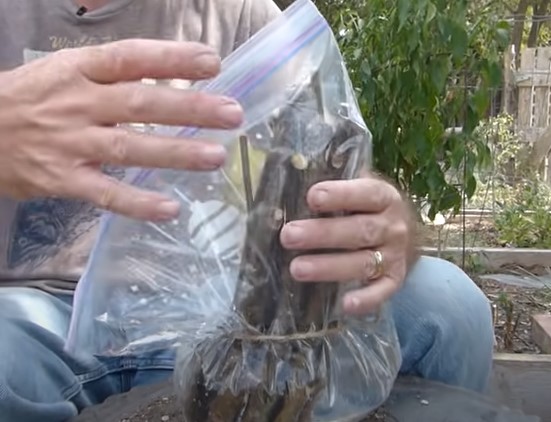
Another method of rooting figs is soaking them in water like the cutting propagation techniques used in other plants. However, there’s a twist, since figs need a humid environment to grow.
Place a couple of cuttings in a zip lock bag and tie them from the outside. Keep the cuttings inside the bag and add water reaching half of the branches.
Keeping the ziplock bag partially open will create a humid environment for the cuttings. Place the bag in a container where the cuttings can sit upright. Place the cuttings in indirect sunlight to speed up the rooting process.
Change the water in the bag twice a week as cuttings need a lot of oxygen from the water to develop roots and leaves.
Frequently Asked Questions (FAQs)
Will fig cuttings root in water?
Yes, figs can root in water as long as it gets the humidity and oxygen it needs. Some gardeners grow figs rooted in water successfully. You just need to replace the water twice a week to ensure proper oxygen absorption.
How long does it take for fig cuttings to root?
Fig cuttings can grow roots for two to three weeks. Their rooting speed depends on the humidity level and the quality of the cuttings that you have. Some may grow but some may fail to root.
So, it’s best to grow more than one cutting to ensure that you have some spare to count on when one fails.
How do I take a cutting from a fig tree?
Find a stem where it has a 0.5-inch diameter. Measure the stem and cut about 6 to 8-inch cuttings wherein the bottom part is slanted while the top end is flat. Place the slanted end 3 to 6 inches deep in the soil.
Final Thoughts
Learning how to grow figs from cuttings is the secret to cost-effective fig propagation. All you need is a sharp pair of pruning shears, a makeshift greenhouse, and indirect sunlight to grow several cuttings.
Fig trees are easy to grow and not as sensitive as other fruit-bearing trees. As long there’s moisture in the soil, oxygen, and humidity, it can survive and provide vigorous leaves and abundant fruits.
We hope that this post helped you discover new ways to grow figs. You can teach most of the methods mentioned in this post to your friends so they no longer have to buy from the local nursery.
With an ounce of patience and TLC in growing plants, you’ll surely be overwhelmed with growing figs in your yard.
Happy gardening!
